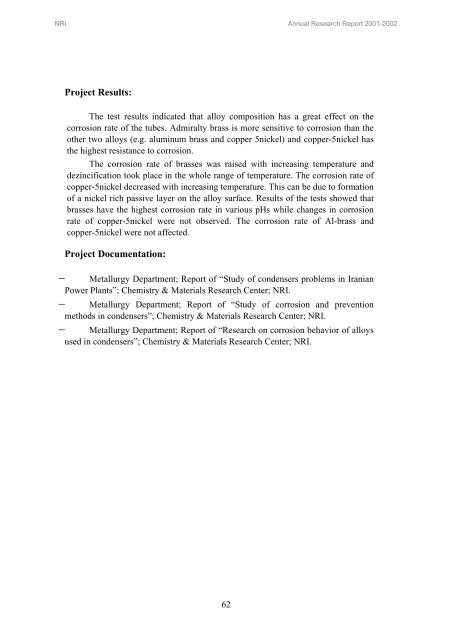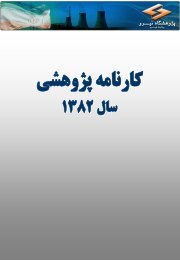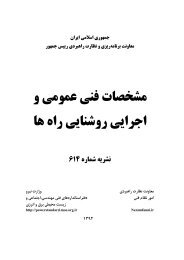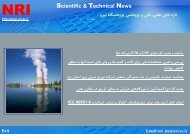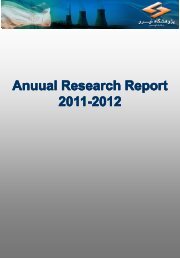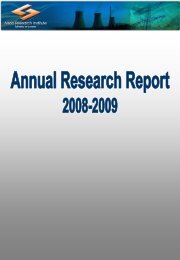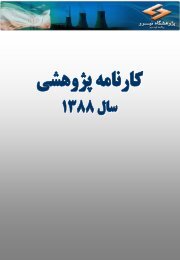Annual Report 2001-2002
Annual Report 2001-2002
Annual Report 2001-2002
Create successful ePaper yourself
Turn your PDF publications into a flip-book with our unique Google optimized e-Paper software.
NRI <strong>Annual</strong> Research <strong>Report</strong> <strong>2001</strong>-<strong>2002</strong>Project Results:The test results indicated that alloy composition has a great effect on thecorrosion rate of the tubes. Admiralty brass is more sensitive to corrosion than theother two alloys (e.g. aluminum brass and copper 5nickel) and copper-5nickel hasthe highest resistance to corrosion.The corrosion rate of brasses was raised with increasing temperature anddezincification took place in the whole range of temperature. The corrosion rate ofcopper-5nickel decreased with increasing temperature. This can be due to formationof a nickel rich passive layer on the alloy surface. Results of the tests showed thatbrasses have the highest corrosion rate in various pHs while changes in corrosionrate of copper-5nickel were not observed. The corrosion rate of Al-brass andcopper-5nickel were not affected.−−−Project Documentation:Metallurgy Department; <strong>Report</strong> of “Study of condensers problems in IranianPower Plants”; Chemistry & Materials Research Center; NRI.Metallurgy Department; <strong>Report</strong> of “Study of corrosion and preventionmethods in condensers”; Chemistry & Materials Research Center; NRI.Metallurgy Department; <strong>Report</strong> of “Research on corrosion behavior of alloysused in condensers”; Chemistry & Materials Research Center; NRI.62


